Saturn is the sixth planet from the Sun in our solar system and the second largest after Jupiter. With a mass 95 times that of Earth, Saturn’s density is much lower—about eight times less. It’s a gas giant primarily composed of hydrogen and helium, surrounded by its famous rings that make it easily recognizable. Though other planets have rings, Saturn’s are the most complex and striking, consisting of icy particles mixed with rocky debris and dust.
Saturn’s core is believed to be composed of iron, nickel, and rocky materials, encased in a thick layer of metallic hydrogen, followed by a layer of liquid hydrogen and helium. Its upper atmosphere, characterized by yellow hues from ammonia crystals, is surrounded by a powerful magnetic field—580 times stronger than Earth’s—despite the planet being primarily composed of gases. Saturn’s atmosphere is also incredibly dynamic, with wind speeds and pressures that can crush spacecraft.
Saturn’s Name and Discovery
Saturn was named after the Roman god of agriculture and wealth. It’s the most distant planet visible to the naked eye and has been known since ancient times. However, it wasn’t until the 17th century, with the advent of telescopic observation, that Saturn’s rings were discovered. Since then, numerous spacecraft have visited or passed by Saturn, providing valuable insights, but much remains to be uncovered about this mysterious planet.
Saturn’s Moons
One of Saturn’s defining features is its large number of moons—currently 83, with 53 officially named. These moons range from tiny moonlets embedded within Saturn’s rings to larger, more distinct moons. Titan, Saturn’s largest moon, stands out as the second-largest moon in the solar system and is even larger than Mercury. Titan is unique because it’s the only moon with a thick atmosphere, making it a subject of scientific fascination.
Size and Distance
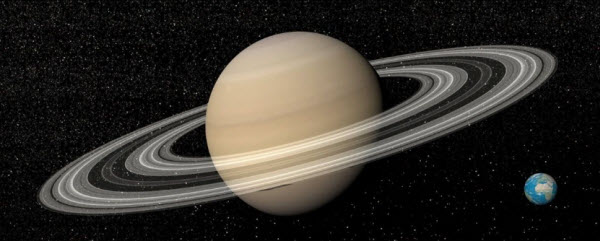
Saturn’s radius is 58,232 kilometers, making it about nine times the size of Earth. If Earth were the size of a coin, Saturn would be a volleyball. Its distance from the Sun is approximately 1.4 billion kilometers, or 9.5 astronomical units (AU). Light from the Sun takes about 80 minutes to reach Saturn.
Orbit and Rotation
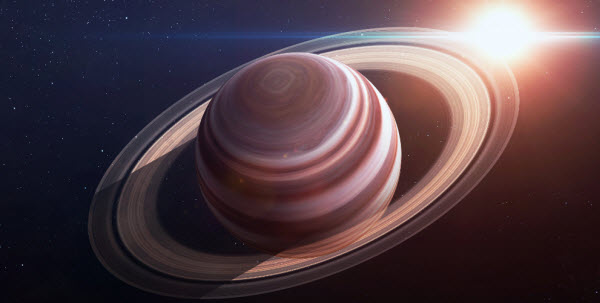
Saturn has the second-shortest day in the solar system, taking only 10.7 hours to complete one rotation. A full orbit around the Sun, however, takes 29.4 Earth years. Unlike Jupiter, Saturn has a significant axial tilt of 26.73 degrees, similar to Earth’s 23.5-degree tilt, allowing for distinct seasons.
Saturn’s Rings
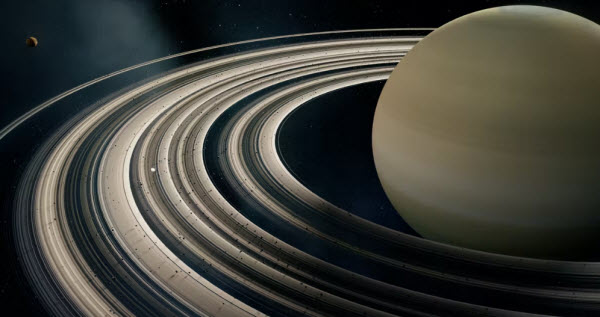
Saturn’s rings are made up of billions of ice and rock particles, with sizes ranging from dust grains to large house-sized chunks. These particles may be remnants of comets, asteroids, or moons that broke apart due to Saturn’s immense gravitational pull. The rings extend out to 282,000 kilometers from the planet, and each ring orbits Saturn at a different speed. The gaps between the rings, such as the 4,700-kilometer-wide Cassini Division, provide further intrigue.
Saturn’s ring system is divided alphabetically based on discovery order: D, C, B, A, F, G, and E, with the faint outermost ring belonging to the moon Phoebe. The rings are mostly composed of water ice and reflect a white appearance, though they contain other materials like dust and rock.
Formation of Saturn
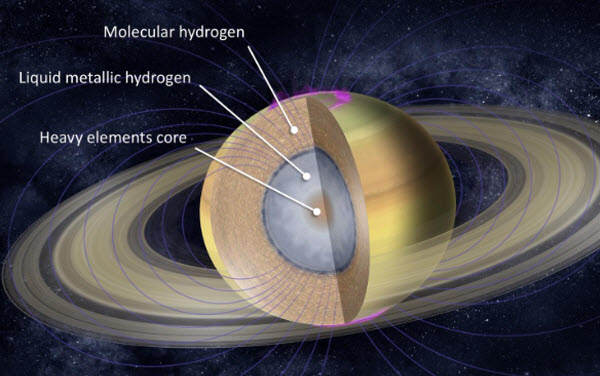
Saturn formed about 4.5 billion years ago, around the same time as the rest of the solar system, as gravity pulled gas and dust together to form the gas giant we see today. Saturn’s composition closely mirrors that of Jupiter and the Sun, with hydrogen and helium being the primary elements.
Structure of Saturn
Like Jupiter, Saturn’s core consists of heavy metals surrounded by a thick layer of metallic hydrogen, which in turn is enveloped by a liquid hydrogen layer. Saturn’s average density is lower than water, which means that if a large enough body of water existed, Saturn would float. This highlights its nature as a gas giant with no solid surface.
Atmosphere and Weather
Saturn’s atmosphere is mostly hydrogen and helium, with visible cloud bands and intense jet streams. Wind speeds can reach up to 500 meters per second, far exceeding the strongest hurricanes on Earth. These atmospheric conditions are responsible for its distinctive bands of yellow, brown, and gray. Saturn also features a unique six-sided jet stream at its north pole, known as the hexagon, which spans 30,000 kilometers and is a rare atmospheric phenomenon not found elsewhere in the solar system.
Magnetic Field
Saturn’s magnetic field is 578 times stronger than Earth’s, encompassing its rings and many of its moons. Unlike Earth’s magnetic field, which is influenced by solar winds, Saturn’s magnetic field may be powered by interactions with particles ejected from its moons. This magnetic environment creates auroras at its poles, similar to Earth’s northern and southern lights.
Possibility of Life
Saturn itself is inhospitable to life as we know it, with extreme temperatures, pressures, and gaseous compositions making it unlikely for organisms to survive there. However, some of Saturn’s moons, particularly Titan and Enceladus, may have subsurface oceans that could potentially support life.
Spacecraft Exploration
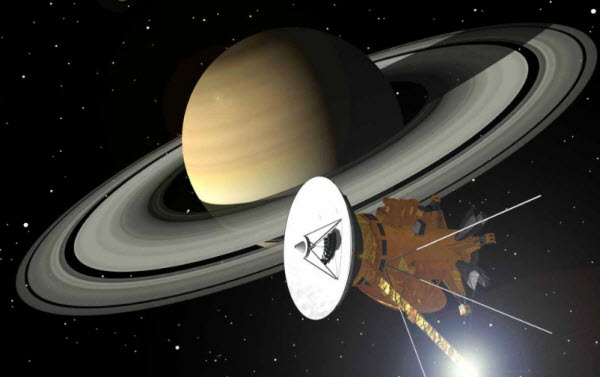
To date, four unmanned spacecraft have visited Saturn. NASA’s Pioneer 11 provided the first close-up images of the planet in 1979. The twin Voyager 1 and 2 spacecraft followed in 1980 and 1981, unveiling more about Saturn’s atmosphere and rings. The most significant mission, however, was Cassini, which orbited Saturn from 2004 to 2017, providing a wealth of data about the planet, its moons, and its rings. The Huygens probe, carried by Cassini, successfully landed on Titan in 2005. Despite Cassini’s mission ending in 2017, telescopic observations, including those from the Hubble Space Telescope, continue to reveal new information about Saturn.
